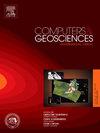For any two arbitrary slices from one digital rock, its twins can be fast stably reconstructed: A novel integrated model of RVION with ADA-PGGAN
IF 4.2
2区 地球科学
Q1 COMPUTER SCIENCE, INTERDISCIPLINARY APPLICATIONS
引用次数: 0
Abstract
The amount of digital rock samples is crucial for studying pore properties. However, it is currently challenging due to equipment limitations or cost considerations. To address this issue, we propose sorts of reconstruction solutions under Data-Scarce Scenarios based on latent inversion predictions from the proposed generative model. Firstly, a novel underlying feature distribution learning model called ResNet-VGG Inversion Optimization Network (RVION) is proposed to infer the latent codes of the real rock images. During inversion, the latent codes predicted by RVION are prepared to interpolate into latent space learned by the generative model. To stably generate high-quality images, the Adaptive Data Augmentation Progressive Growing Generative Adversarial Network (ADA-PGGAN) is proposed, which includes a mechanism to supervise discriminator’s overfitting and automatically adjust levels of data augmentation. Subsequently, interpolated latent codes are input into the generator to progressively increase image resolution and reconstruct large-scale 3D digital rocks. Finally, evaluations using various metrics were conducted in both 2D and 3D on our results. The Sliced Wasserstein Distance (SWD) was used to assess our proposed data augmentation operation. The majority of SWD values remained below 0.01, and further decreased as the resolution increased. Furthermore, generated images accurately exhibited core characteristics. We also evaluated our results in 3D with corresponding metrics, structural properties to indicate consistency with given samples.
求助全文
约1分钟内获得全文
求助全文
来源期刊

Computers & Geosciences
地学-地球科学综合
CiteScore
9.30
自引率
6.80%
发文量
164
审稿时长
3.4 months
期刊介绍:
Computers & Geosciences publishes high impact, original research at the interface between Computer Sciences and Geosciences. Publications should apply modern computer science paradigms, whether computational or informatics-based, to address problems in the geosciences.
 求助内容:
求助内容: 应助结果提醒方式:
应助结果提醒方式:


